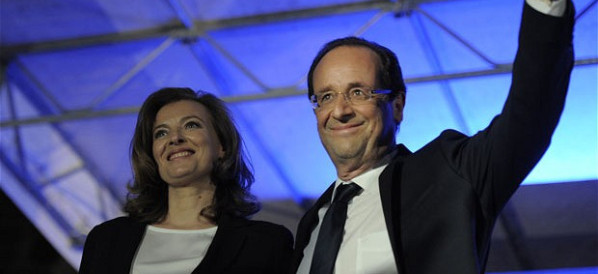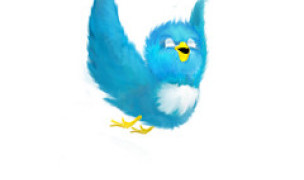 8 Terms
8 TermsHome > Terms > English (EN) > animals and the media
animals and the media
The construction of nature, wild and tame, speaks eloquently to changing beliefs throughout American history. Folklore abounds with animal helpmates like Paul Bunyan’s giant blue ox babe or the subversive African American trickster tales of Br’er Rabbit outwitting his captors. Contemporary media build upon these images in popular shows where intelligent, benevolent and witty animals—dolphins, horses, dogs, a rare cat and overactive chimps—assist humans to develop their humanity. These overlap with more documentary depictions that may nonetheless denature the wild. Yet, lurking beyond these friendly figures is savage nature—unleashed, for example, in furious attacks in Them! (1954) by giant ants, Jurassic Park (1993) or Wolf (1994).
Rin Tin Tin (1916–32) and Lassie (a helpful female family collie played by a male dog with additional human actor sounds) provided gendered templates for domestic animals in movies (1923–31 and 1943–50, respectively). Lassie’s television debut came in 1947 (ABC). He/she reappeared for the next three decades, including a cartoon version (1973– 5). Dog companions also help delineate major characters in movies and shows, including comments on snobbery and affectation in the 1990s hit Frazier, or more heroic sidekick roles (Benji, 1974; Turner and Hooch, 1990). Cats, despite their popularity as pets, prove harder to work with, although they appear in witchcraft representations. Both cats and dogs are frequently used in advertising.
Other media play on curiosity about mammals “closer” to humans (Flipper the dolphin and various chimp shows and films). Some creatures, moreover, crossed the line through animation or tricks, like the wise-cracking, talking horse of CBS’ sitcom Mr Ed (1961– 6). In all, one sees valued traits of American relationships and citizenship read across species—loyalty independence—and an interesting continuing irony about humans.
Disney’s animated features, from Mickey Mouse to Tarzan (1999), have pushed this interlocutor/mimic role even further.
Animal documentary traditions have also blurred relations of nature and culture. Early television programs were especially linked to zoos and zookeepers creating bridges between the wild and the familiar, including interactions with talk-show hosts. National Geographic, America’s premier explorer of the exotic, has also produced more scientific studies of animals ranging from whales to domestic cats. Meanwhile, Disney’s liveaction films and television (Seal Island (1948), Jungle Cat (1960), etc.) have created characters and life narratives in the wild.
This immediacy and humanity of nature reaffirms both the meaning in wilderness and its essential humanity, a charter for appropriation. Yet nature can also convey power and uncertainty, as horror, sci-fi and disaster media suggest, and Cujo (1983) replaces Lassie. In the 1990s, videos of fighting and killing by wild animals are even marketed alongside reality shows like “Cops.” Hence, representations of animals and nature, like their manipulation in pets, parks and food production, provide multiple visions of American identity See also: nature.
- Part of Speech: noun
- Synonym(s):
- Blossary:
- Industry/Domain: Culture
- Category: American culture
- Company: Routledge
- Product:
- Acronym-Abbreviation:
Other Languages:
Member comments
Terms in the News
Billy Morgan
Sports; Snowboarding
The British snowboarder Billy Morgan has landed the sport’s first ever 1800 quadruple cork. The rider, who represented Great Britain in the 2014 Winter Olympics in Sochi, was in Livigno, Italy, when he achieved the man-oeuvre. It involves flipping four times, while body also spins with five complete rotations on a sideways or downward-facing axis. The trick ...
Marzieh Afkham
Broadcasting & receiving; News
Marzieh Afkham, who is the country’s first foreign ministry spokeswoman, will head a mission in east Asia, the state news agency reported. It is not clear to which country she will be posted as her appointment has yet to be announced officially. Afkham will only be the second female ambassador Iran has had. Under the last shah’s rule, Mehrangiz Dolatshahi, a ...
Weekly Packet
Language; Online services; Slang; Internet
Weekly Packet or "Paquete Semanal" as it is known in Cuba is a term used by Cubans to describe the information that is gathered from the internet outside of Cuba and saved onto hard drives to be transported into Cuba itself. Weekly Packets are then sold to Cuban's without internet access, allowing them to obtain information just days - and sometimes hours - after it ...
Asian Infrastructure Investment Bank (AIIB)
Banking; Investment banking
The Asian Infrastructure Investment Bank (AIIB) is an international financial institution established to address the need in Asia for infrastructure development. According to the Asian Development Bank, Asia needs $800 billion each year for roads, ports, power plants or other infrastructure projects before 2020. Originally proposed by China in 2013, a signing ...
Spartan
Online services; Internet
Spartan is the codename given to the new Microsoft Windows 10 browser that will replace Microsoft Windows Internet Explorer. The new browser will be built from the ground up and disregard any code from the IE platform. It has a new rendering engine that is built to be compatible with how the web is written today. The name Spartan is named after the ...
Featured Terms
François Hollande
François Hollande (born 12 August 1954) is a French politician who defeated Nicolas Sarkozy to become the 24th president of France on May 6, 2012. ...
Contributor
Featured blossaries
Browers Terms By Category
- General architecture(562)
- Bridges(147)
- Castles(114)
- Landscape design(94)
- Architecture contemporaine(73)
- Skyscrapers(32)
Architecture(1050) Terms
- Body language(129)
- Corporate communications(66)
- Oral communication(29)
- Technical writing(13)
- Postal communication(8)
- Written communication(6)
Communication(251) Terms
- Fuel cell(402)
- Capacitors(290)
- Motors(278)
- Generators(192)
- Circuit breakers(147)
- Power supplies(77)
Electrical equipment(1403) Terms
- Journalism(537)
- Newspaper(79)
- Investigative journalism(44)
News service(660) Terms
- Material physics(1710)
- Metallurgy(891)
- Corrosion engineering(646)
- Magnetics(82)
- Impact testing(1)





